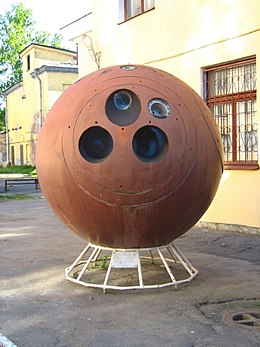|
Kosmos 16
Kosmos 16 (Russian: Космос 16 meaning Cosmos 16) or Zenit-2 No.10 was a Soviet optical film-return reconnaissance satellite which was launched in 1963. A Zenit-2 satellite, Kosmos 16 was the tenth of eighty-one such spacecraft to be launched.[3][4] SpacecraftKosmos 16 was a Zenit-2 satellite, a first generation, low resolution, reconnaissance satellite derived from the Vostok spacecraft used for crewed flights, the satellites were developed by OKB-1. In addition to reconnaissance, it was also used for research into radiation in support of the Vostok programme. It had a mass of 4,730 kilograms (10,430 lb).[1] MissionThe Vostok-2 rocket, serial number E15000-02,[5] was used to launch Kosmos 16. The launch took place at 09:36:00 GMT on 28 April 1963, using Site 1/5 at the Baikonur Cosmodrome. Following its successful arrival in orbit the spacecraft received its Kosmos designation, along with the International Designator 1963-012A and the Satellite Catalog Number 00571.[1] Kosmos 16 was operated in a low Earth orbit. On 30 April 1963, it had a perigee of 194 kilometres (121 mi), an apogee of 388 kilometres (241 mi), with an inclination of 65.0°, and an orbital period of 90.4 minutes.[2] A malfunction of the spacecraft's attitude control system resulted in the satellite being able to return only some of the images, due to the failure of the engine block stabilisation system.[1] After ten days in orbit, the spacecraft was deorbited on 8 May 1963.[6] Its return capsule descended under a parachute and was recovered by the Soviet forces in the steppe in Kazakhstan. See alsoReferences
|
||||||||||||||||||||||||||||||||||||||||||||||||||||||||||||||||||
